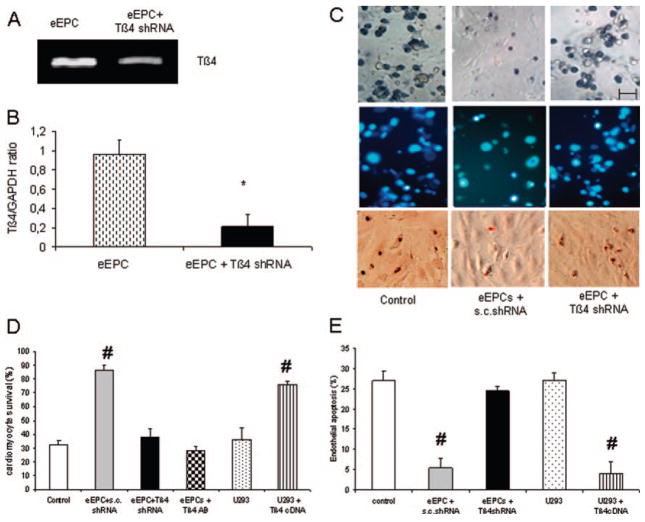Figure 1.
Effect of Tβ4 shRNA on eEPC-mediated cardiomyocyte and endothelial cell survival after hypoxia-reoxygenation. Example (A) and quantification (B) of the reduction of Tβ4 by shRNA. C, Examples of neonatal cardiomyocyte survival (Trypan blue exclusion, top) after 4 hours of hypoxia and 1 hour of reoxygenation with or without coapplication of eEPCs transfected by scrambled (s.c.) or Tβ4 shRNA (bar=20 μm). D, eEPCs but not U293 cells displayed cardiomyocyte protection. The effect of eEPCs was blunted by Tβ4 shRNA or Tβ4 antibody application, whereas U293 cells provided cardioprotection after Tβ4 transfection. E, Neonatal endothelial cells underwent apoptosis after 18 hours of hypoxia and 4 hours of reoxygenation unless eEPCs or Tβ4-transfected U293 cells were applied. *P<0.05 vs eEPC; #P<0.05 vs control, eEPCs plus Tβ4 shRNA, and U293 cells (n=4 independent experiments).

